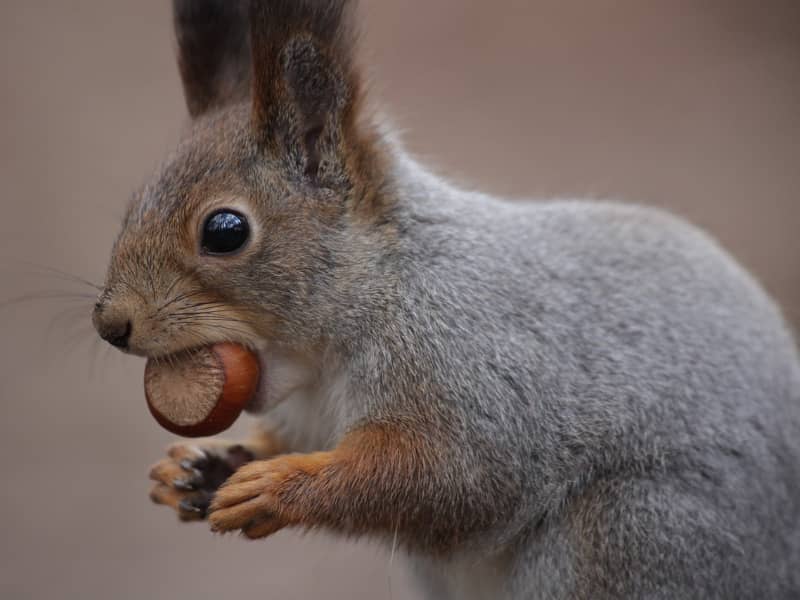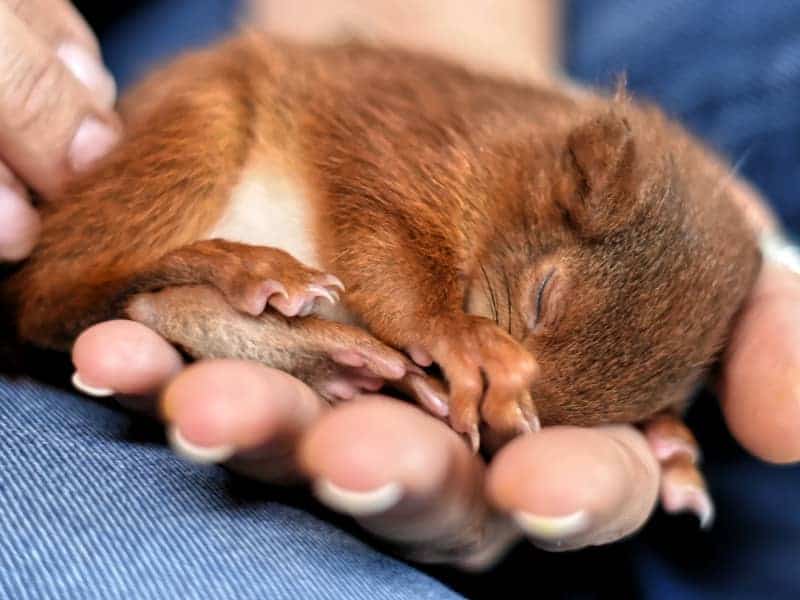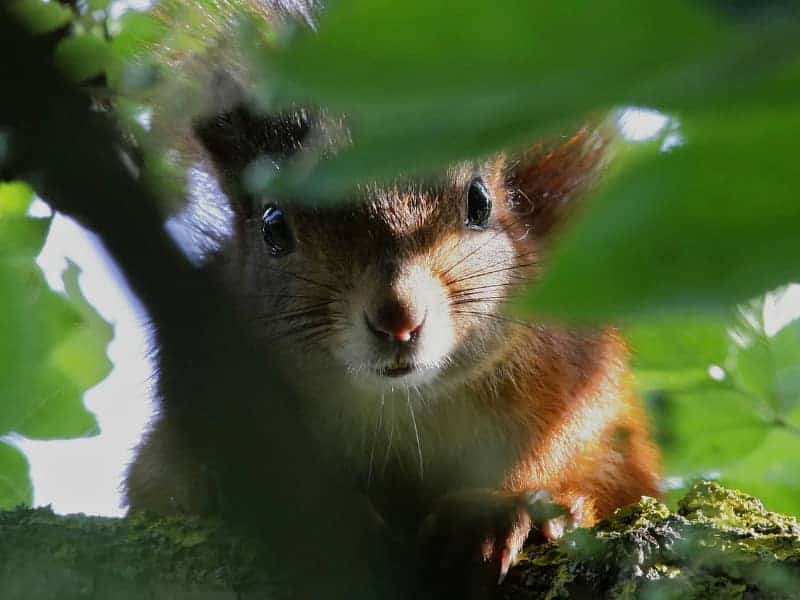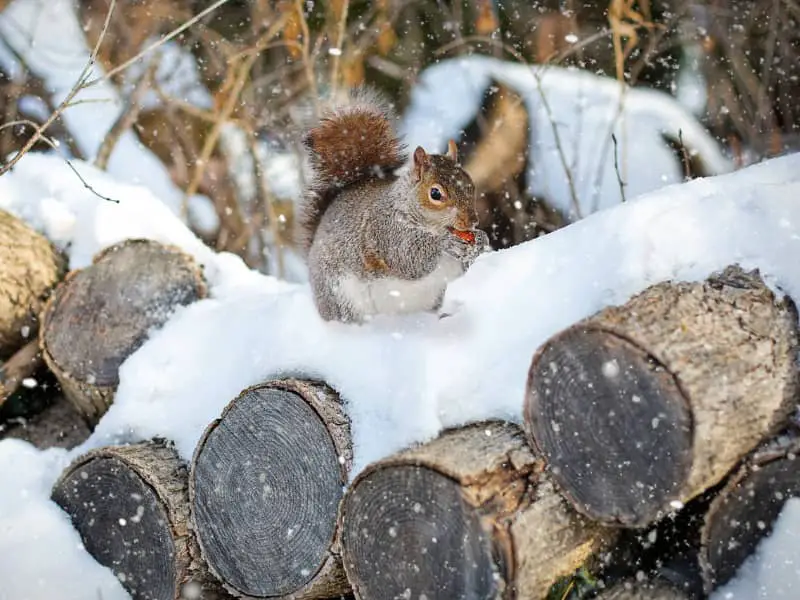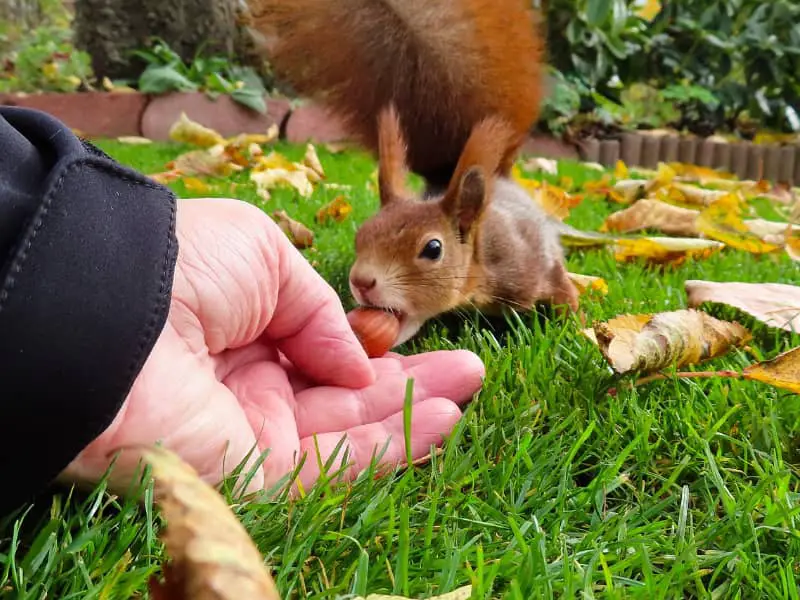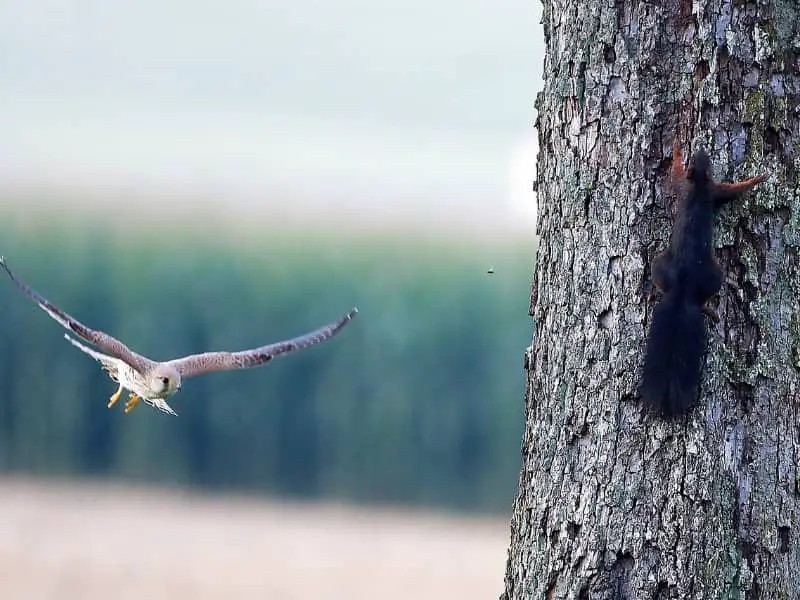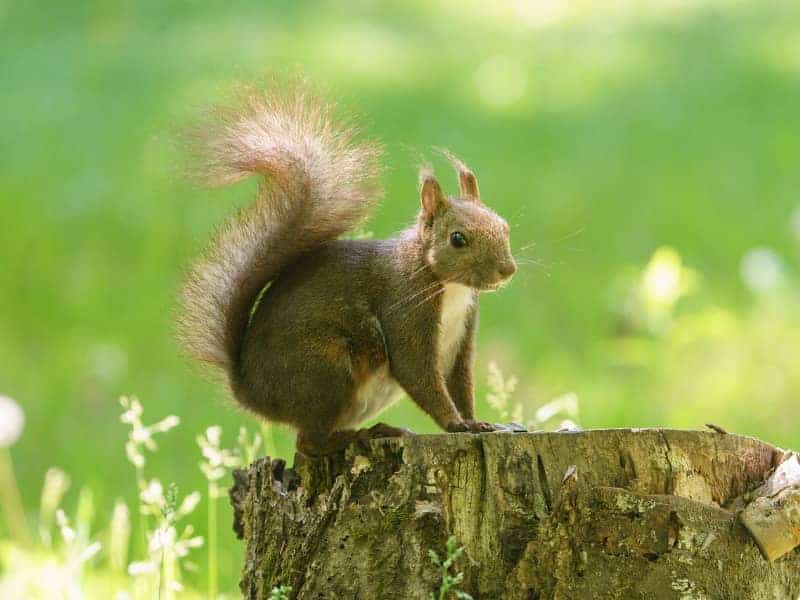
Japanese squirrels
The Japanese squirrel (Sciurus lis) is a close relative of our squirrels. It is believed to have migrated to the Japanese islands from Sakhalin, a rock off the mouth of the Black Sea. It is thought to be descended from the Eurasian squirrel (Sciurus vulgaris).
What does the Japanese squirrel look like?
The Japanese squirrel has a body length of 16 to 22 cm. Its tail has a length of 13 to 17 cm. The adult animal brings a weight of about 300 g on the scale. You can also recognize the Japanese squirrel by the white hairs on its belly and the white tip of its tail. In summer, the coat turns reddish brown, while in winter it is more gray. The animals live on average between 5 and 6 years.
The animal was first described in 1844 by the Dutch zoologist Coenraad Jacob Temminck.
Where can you find the Japanese squirrel?
Primarily, the rodents live on the main islands of Shikoku and Honshu. You can also find the Japanese squirrel on the smaller island of Awaji-shima. On the northern peninsula of Hokkaido you will not find the small rodents.
In Japan, squirrels primarily live in boreal coniferous forests and running forests with an old tree population. You can find them more and more often in parks and gardens. In the mountains, the Japanese squirrel lives up to the limit of 2000 meters.
According to the IUCN, the Japanese squirrel is not endangered. The reason for this is its relatively large and stable range.
The diet
Similar to squirrels in our country, it eats the fruits of certain deciduous and coniferous trees, nuts, buds, young shoots and berries. If they have the opportunity, they also eat insects, larvae, bird eggs and young birds.
In the early morning and evening hours, the Japanese squirrel goes in search of food. In summer, the animals avoid the hot afternoon hours and spend their time in their hawks.
For the winter, rodents, just like us, create one or more winter depots. With the help of their memory and the very good sense of smell, they find all the depots again.
The reproduction
In the second or third year of life, the Japanese squirrel reaches sexual maturity. In the late winter to late spring, the mating season begins. Wild chases between males and females occur.
The animals build their nests at airy heights. The goblet has a diameter of about 50 cm, with the interior measuring about 30 cm in diameter.
If the animals have successfully mated, the young are born after a gestation period of 36 to 38 days. At birth, they are blond, naked and deaf. They weigh between 8 and 10 g. From the ninth or tenth week, the young squirrels leave the protective nest for the first time. From the sixth week, however, you can observe that the little ones are already outside the nest. If danger threatens, they are immediately brought into the goblet by the mother carrying them in her mouth.
Author

-
Garden animal - A life with nature
Welcome to my animal blog! My name is Dirk and I am happy to take you on my journey through the fascinating world of animals and gardening.
Born 54 years ago, I have had an insatiable curiosity for the animal world around me since childhood. Although I have moved professionally in other industries, my true passion has always been animals and nature. It is remarkable how a small garden has become such an important part of my life.
Many of my fondest memories are associated with the animals that share our home. Whether it's the curious squirrels that scurry across the trees in the morning, the colorful variety of birds that visit our feeders, or the busy bees and butterflies that pollinate our flowers, every moment with them is invaluable to me.
This blog is my contribution to share my experiences, discoveries and insights with like-minded people. Here I will share stories of unforgettable encounters with animals, give tips on gardening and creating wildlife-friendly habitats, and take you on my journeys through nature.
Thank you so much for being here!
Cordial,
Dirk aka garden animal
Last posts
- 27. February 2024PetsVeganes Hundefutter – Grün und Gesund?
- 18. January 2024ChickensOregano für Hühner
- November 27, 2023HamsterDiurnal hamsters
- November 24, 2023HamsterHamster hammock

